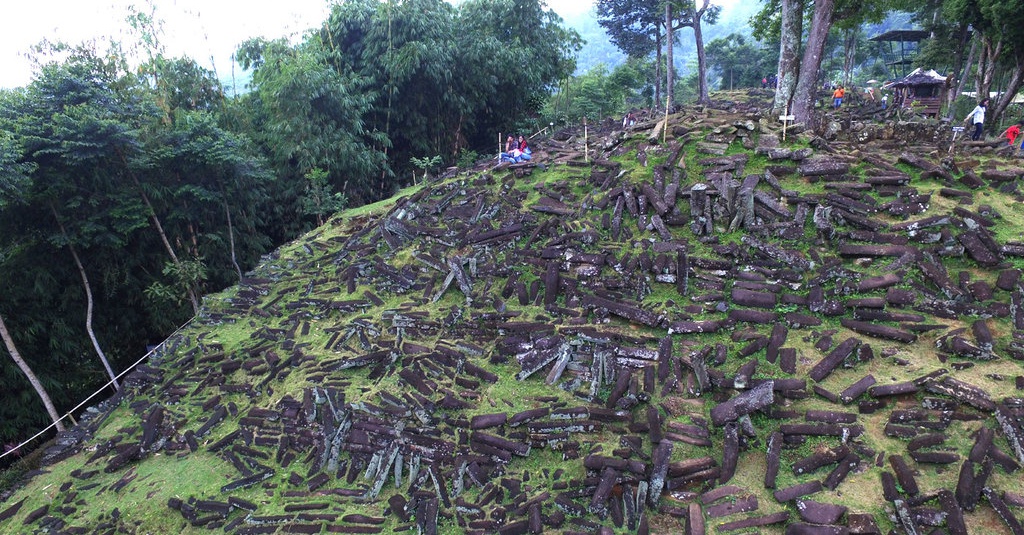Tucked away within the scenic landscapes of West Java, Indonesia lies Gunung Padang, a mesmerizing complex of megalithic stones nestled upon the mountainside. Long mistaken for a natural hill, this site has now emerged as a testament to ancient human craftsmanship, revealing a history dating back over 25,000 years.

The discovery of the Gunung Padang pyramids unfolded across four distinct phases of construction, an astounding feat spanning millennia. Initially disregarded as a mere hill, the site underwent comprehensive fieldwork that unearthed its true origins. In 2018, archaeologists proposed the hypothesis that the entire mound might be an artificial structure, housing more than visible stone formations on its surface. This groundbreaking conclusion stemmed from a multidisciplinary team’s extensive three-year survey conducted from 2011 to 2014.

While skepticism initially clouded this notion, the research team has now published a detailed account of their investigation in the Archaeological Prospection journal, providing compelling evidence that solidifies Gunung Padang’s status as the world’s oldest pyramid. Dating back thousands of years before the Common Era, carbon isotope analysis conducted on organic soil samples extracted from the structure revealed multiple construction phases, with the earliest dating back to the ancient Stone Age.

Employing a diverse array of techniques such as Electrical Resistivity Tomography (ERT), Ground-Penetrating Radar (GPR), and Seismic Tomography (ST), the research team painted a comprehensive picture of the mountain’s interior and the timeline of its construction. Core drilling at seven different locations uncovered that the pyramid was built across four separate phases spanning thousands of years.

Standing at a height of 20 to 30 meters, the construction commenced with Cluster 4. Initially buried deep within the mountain, this first phase likely began as a natural hill, meticulously carved into its present shape between 25,000 to 14,000 years ago. Cluster 3 comprised stone columns arranged akin to bricks in a building, constructed approximately between 7,900 to 6,100 years before the Common Era. Roughly a millennium later, between 6,000 and 5,500 BCE, craftsmen arrived at Gunung Padang to erect Cluster 2. The final builders arrived between 2,000 and 1,100 BCE, constructing Cluster 1.
Furthermore, the research team unearthed evidence of “hidden chambers or rooms within the structure,” awaiting detailed exploration in forthcoming field surveys. These recent findings challenge the notion that sophisticated construction techniques only emerged with the advent of agriculture around 11,000 years ago.
Gunung Padang stands as an enigmatic testament to ancient human ingenuity, inviting us to unravel the mysteries concealed within its ancient stone enclaves and to rewrite the narrative of human civilization’s early achievements.





